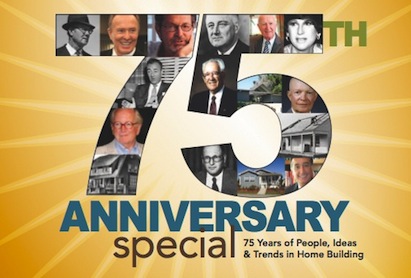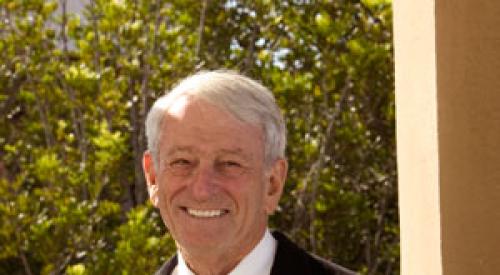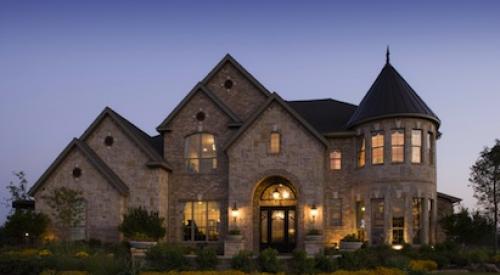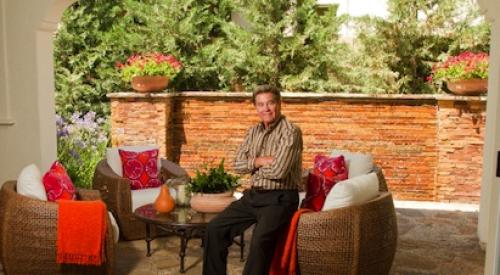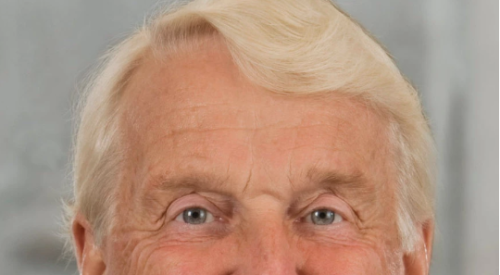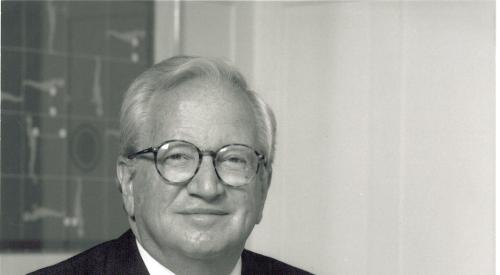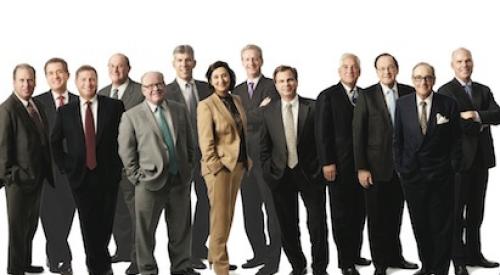As 2011 comes to a close and we at Professional Builder wrap up work on our 75th year serving the U.S. home-building industry, the editors thought it was fitting to take a step back and reflect on the many pioneering figures, breakthrough ideas, and transformative market trends that have shaped home building since 1936.
What follows is not meant to be a complete, comprehensive timeline of 20th-century home building, rather a collection of key milestones and innovators during Professional Builder’s long tenure.
We hope you enjoy our 75th Anniversary Special and we welcome your feedback on our timeline, specifically who or what we left off. Please email your submissions to David Barista, Editor-in-Chief, at dbarista@sgcmail.com. They will be considered for inclusion.
1936 - Practical Builder — Home Building Gets a National Voice
In the spring of 1936, Professional Builder debuted as Practical Builder magazine, providing the localized business of home building with a national source for market trends, new products, breakthrough techniques and technologies, and industry best practices. Seventy-five years later, the editors of Professional Builder proudly carry on the publication’s long legacy as a trusted source for business information for the U.S. home-building industry.
1938 - Franklin Delano Roosevelt — The Middle Class is Born
FDR may not immediately leap to mind when one thinks of those who influenced the industry, but there were several important decisions during his time as president that profoundly affected the industry. His New Deal created the Federal National Mortgage Association (or Fannie Mae) in 1938, which, along with its younger sibling, Freddie Mac, has been crucial in providing mortgage funds to millions of homeowners. Then, in 1944, Roosevelt signed the G.I. Bill of Rights, which essentially created the middle class by paying for education and offering guaranteed home loans for soldiers returning from World War II. From 1944 to 1952, the government backed nearly 2.4 million home loans for WWII veterans. By 1956, 7.8 million veterans had taken advantage of the education benefits of the program.
1939 - MIT Solar 1 — America’s First Sun-Powered Home
More than three decades before the oil crisis sparked the solar-powered home craze in the U.S., engineers at the Massachusetts Institute of Technology built the first house in America to be completely heated by the sun’s energy. MIT Solar 1 was a single-story structure on MIT’s campus that utilized a solar hot water system to heat the home. It was the first of six high-tech solar homes to be built at MIT as part of the university’s Solar Energy Research Project, which came to an end in 1962.
1940 - Sears, Roebuck & Co. — Mail-Order Mavens
From 1908 to 1940, Sears, Roebuck & Co. sold approximately 75,000 homes through its Modern Homes mail-order program. Customers could choose from 447 different styles depicted in a specialty catalog, ranging from the simple Goldenrod (a three- room cottage with no bath) to the elaborate Ivanhoe with its elegant French doors and art-glass windows. The entire house would arrive by railroad in a package that included everything from precut lumber and carved staircases to nails, varnish, and building instructions. New technologies — central heating, indoor plumbing, electricity — were incorporated into the program as they became available. Sears’ ability to mass-produce materials lowered manufacturing costs and, in turn, the cost to the customer. Precut and fitted materials reduced construction time by up to 40 percent, and balloon-style framing, drywall, and asphalt roof shingles streamlined on-site assembly. The Modern Homes program encouraged buyers to customize their homes. It wasn’t unusual for floor plans to be reversed, dormers added, or brick siding chosen instead of wood. That’s why it’s difficult to identify Sears homes today, even though thousands are still standing.
1942 - NAHB Founded — Builders Get a Unified Voice
The burgeoning U.S. housing market found its collective voice during WWII when the National Home Builders Association and the Home Builders Institute merged to create the National Association of Home Builders. For 69 years, NAHB has dutifully represented the interests of its members in Washington and has supported builders with everything from market data and education to sales and marketing tools and networking opportunities.
1947 - William J. Levitt — The Father of Modern Suburbia
Bill Levitt is best known as the creator of Levittown, N.Y., the model for countless post-World War II suburbs. At a time when few working people could afford a home, Levitt helped them realize their dream, starting with servicemen and women returning from the war. From 1947 to 1951, Levitt built and sold 17,447 Cape Cod homes on an abandoned potato farm in Nassau County, Long Island. The homes were 750 square feet with two bedrooms, a living room, a kitchen, a bath, and an unfinished second floor. They had no basements or garages, but at $7,990, they were a great value. Bill, his father, Abraham, and his brother, Alfred, perfected their assembly-line construction technique, breaking down the process into 27 operations and organizing teams to repeat each operation in each home. By 1948, they were churning out 30 homes a day. Bill Levitt died in 1994, and Levitt & Sons declared bankruptcy in 2007. But Levittown, N.Y., still thrives. Most of the original tract houses have been remodeled to reflect the personalities of their owners.
1949 - Open Floor Plan — Less Becomes More in Housing
Open floor plans in custom homes date to an earlier time, perhaps to Frank Lloyd Wright’s first Prairie School homes built in the 1890s. Much is also owed to the influence of Bauhaus- trained architectural giant Ludwig Mies van der Rohe, whose 1946 Farnsworth House in Plano, Ill. (pictured), is an icon of modern architecture. Beginning after World War II, the widespread availability of engineered wood and laminated beams made open floor plans an option in plan-built homes. To our reckoning, open floor plans first became commercially available in 1949 with the introduction of the California Modern style pioneered by builders like Joseph Eichler. From that beginning, open floor plans have become a ubiquitous feature, demanded today by home buyers of all types.
1950 - Joseph Eichler — Modernist Home Builder
California builder and developer Joseph Eichler was one of the first production home builders in the country to bring modern architectural style, which was prevalent in commercial and high-end residential architecture at the time, to middle- class buyers. Up until his passing in July 1974, Eichler developed 12 communities and more than 11,000 homes throughout Northern and Southern California, including The Highlands community in San Mateo. To this day, “Eichlers” are treasured by their owners and are among the most sought-after homes in California, with numerous websites and Realtors dedicated to Eichler history and homes for sale.
1952 - Metal Truss Plate — Advancing Component Building
Before A. Carroll Sanford came along, building wood trusses was a time- consuming, laborious process. In 1952 in Pompano Beach, Fla., the inventor and founder of Sanford Industries patented the metal-plate- connected engineered wood truss, which transformed the truss industry — and home building — by allowing for the prefabrication of short- and long-span trusses. Prefab roof trusses remain the most widely used panelized construction component.
1953 - Window Air-Conditioning Units — A Game Changer for American Living
While the window/through-wall air- conditioning unit was patented in the early 1930s, the technology was considered a luxury until after WWII. In just a five-year span from 1948 to 1953, sales of window AC units skyrocketed from 74,000 to over a million annually. The technology had a profound impact on both residential design and population migration in the mid-20th century. For better or worse, it enabled designers and builders to create homes that were no longer reliant on outdoor conditions (out with the front porch, in with large picture windows and more square footage). It also made possible the massive population migration to the Southwest and Southeast following the war, spurring explosive growth of Sunbelt cities like Atlanta, Houston, Las Vegas, and Miami.
1954 - Lee Evans — The Business Management Guru
When Lee Evens came onto the home-building scene in the mid-1950s, many builders were flying blind when it came to business management, with little or no strategic planning or management processes in place. For the next 38 years, Evans largely dedicated his professional career to arming builders with the knowledge and skill set (through his consulting business and management training seminars) to help them prosper in the cyclical, high-risk business of production home building. Evans, who passed away in November 2009 at the age of 92, stressed the importance of short- and long-term business planning, operational efficiency, and profitability, and was one of the first to develop financial benchmarks for builders. He was also a pioneer in applying the principles of quality management in home building, co-authoring Quality in Construction: A Residential Builders Manual in 1974.
1956 - Dwight D. Eisenhower — Connecting America
Among Ike’s chief accomplishments as the nation’s 34th President was championing and signing the Federal-Aid Highway Act of 1956, which authorized funding for some 41,000 miles of interstate highways throughout the U.S. The nation’s freeways, highways, and expressways quickly became the backbone of America and allowed suburban and exurban communities to sprout up — areas ripe for home building.
1956 - Pneumatic Framing Nailer — Speeding Construction
While patents for pneumatic fastening and stapling tools date back to the 1930s, the genesis of the pneumatic framing nailer was really 1956, when three friends — Marvin Hirsch, Reuben Miller, and John Ollig — filed patents for a tool based on their working knowledge of machine guns. Their subsequent venture, Port-A-Matic Tools, went belly up before they could sell many Port-A-Matic Nailers to builders (Bostich purchased the company’s assets in a bank auction), but their efforts eventually led to the development of one of the most vital tool categories in home building. Paslode is largely credited with developing the first pneumatic nailer suitable for modern production home-framing applications. Developed in 1973, the Paslode SK 312 was the first nailer on the market to handle the longer, 3-inch nails required for stick-built home building.
1957 - Vinyl Siding — Builders Get a Low-Maintenance Cladding Option
Production home building’s most widely used exterior cladding material, vinyl siding, was originally developed and manufactured by Crane Performance Siding in 1957 as a replacement option for aluminum-clad homes. It would be two decades before vinyl siding was commonplace in home building, offering builders a durable, versatile, and low-maintenance cladding at an affordable price. Subsequent innovations led to the development of insulated vinyl systems, as well as an endless variety of colors, profiles, and architectural accessories. In 2010, vinyl held a 36 percent share of the new-home exteriors market, according to the U.S. Census Bureau.
1958 - Donald Bren — Southern California’s Mega Master Planner
Perhaps no other developer and master planner has had a bigger influence on modern suburbia than Donald Bren. The billionaire entrepreneur began his career in real estate in 1958, building homes throughout Orange Country, and five years later co-founded
the Mission Viejo Company (MVC), which planned and developed the city of Mission Viejo, Calif., on 10,000 acres. Leveraging assets gained by selling and then repurchasing MVC at an opportune time (post-recession), Bren teamed with two other investors to buy the Irvine Company and its prized property, the 90,000-plus-acre Irvine Ranch. It is there where Bren made his biggest mark, developing design-focused, master-planned communities that are among the most copied and admired developments in the country. Bren’s chief master- planning tenants include the importance of untouched green space, public spaces, and amenities, and the power of great design that meets buyers’ needs.
1959 - Sanford R. “Sandy” Goodkin — Market Researcher
Before Sandy Goodkin, market research was mainly confined to advising builders on the feasibility of various locations. Goodkin revolutionized the application of market research in home building by advising his builder clients on what design would capture a certain market, how the models should be decorated, and even the sociological implications of the sites being developed. Goodkin’s best practices are now considered essential components for any feasibility study.
1960 - Del E. Webb — Father of the Retirement Community
Before California-born builder Del Webb came along, it was commonly thought that retirement- age buyers would not be interested in being segregated from the population. Webb (pictured, on right), along with other senior-living pioneers like Ross W. Cortese, discovered the untapped potential and voracious demand for recreation-focused retirement communities. On January 1, 1960, Webb opened the first Sun City outside of Phoenix, complete with a shopping center, golf course, and five models, and the retirement community industry was born.
1961 - Eli Broad — The National Home Builder
Co-founder of Kaufman & Broad (KB Home), Eli Broad earned the recognition of Professional Builder of the Year in 1968 due primarily to his wildly successful expansion strategy set forth seven years earlier. Founded in 1956 in Detroit, K&B quickly rose to become one of the first national builder giants after moving into markets such as Los Angeles and Phoenix in 1961. To help finance the expansion, Broad took K&B public in 1962 — the first builder to do so.
1964 - NAHB Research Foundation — R&D for Home Builders
In 1964, the National Association of Home Builders launched the NAHB Research Foundation (now the NAHB Research Center) to offer its members an independent, unbiased source of product and material testing. Over the years, the Research Center has grown into a full-fledged R&D and consulting organization, and has been a leader in the areas of quality management (through the National Housing Quality program), energy-efficient, high-performance homes, and green product and home certification.
1966 - Carole Eichen — Interior Merchandiser Extraordinaire
A lack of formal training in interior design didn’t stop Carole Eichen from making her mark on the housing industry; decorating homes was her passion from the very beginning. Holding firm to the belief that home buyers need to be involved emotionally and psychologically in the sale, Eichen developed cohesive design concepts for model homes that appealed to specific buyer types. She coined the terms “interior merchandising” and “buyer profile.” After founding Carole Eichen Interiors in Newport Beach, Calif., in 1966, Eichen began working closely with prominent home builders such as KB Home, Warmington Homes, and William Lyon Homes. Her model homes featured a bold use of color and accents such as drapes, throw pillows, and tile, creating a comfortable, lived-in look. Eichen, who died in 2003, won numerous awards during her career, including the Max C. Tipton Memorial Award for marketing excellence and achievement.
1966 - John D. “Jack” Bloodgood — Champion of Quality Architecture
When Jack Bloodgood started Bloodgood Architects and Planners (now BSB Design) in Des Moines, Iowa, in 1966, most production homes were designed by builders from plans purchased at a lumberyard. There was little variety or choice. Bloodgood believed that both builders and home buyers deserved something better. In 1957, while he was building editor for Better Homes and Gardens, he became involved with the magazine’s Better Homes for All America program, designed to bring cutting-edge architecture to builders across the U.S. Bloodgood worked with builders and architects to help create prototypical houses that responded to the way people lived. After launching his architectural practice, Bloodgood introduced such innovations as the family room concept, indoor- outdoor living, and the multipurpose dining room. He also established a plan service to help bridge the gap between architects and builders and create designs with proportion, character, and livability.
1967 - James W. Rouse — Builder of Malls and Cities
Legendary developer and master planner James Rouse is best known for his work developing retail malls — he built the first enclosed mall east of the Mississippi and pioneered the creation of the festival marketplace model and mall food courts — but one of his greatest achievements is Columbia, Md., a massive master- planned city near Baltimore. One of the most ambitious from-scratch community developments during the 1960s, Columbia debuted in 1967 with the opening of the first of 10 villages, each comprised of several neighborhoods with a mix of housing types, retail, schools, recreation, and other amenities. While Columbia never fully lived up to Rouse’s vision, it remains a highly popular suburb today and has made Money Magazine’s “100 Best Places to Live” list multiple times.
1974 - HUD-Code Housing — Setting Standards for Housing
Manufactured homes are also known as “HUD Code” homes because they comply with the National Manufactured Housing Construction and Safety Standards Act of 1974. Congress enacted the HUD Code to preserve access to affordable housing for middle- and lower-income families, and to uniformly regulate manufactured- home construction and safety issues. The HUD Code is the only federal, preemptive building code in the U.S., and is unique in that it’s specifically designed for compatibility with the factory production process. The code sets performance standards for heating, plumbing, air conditioning, and thermal and electrical systems, and establishes requirements for structural design, construction, fire safety, energy efficiency, and transportation from the factory to the home site. Today’s manufactured homes are a far cry from trailers. They offer many of the same features as stick-built homes, including state-of-the-art kitchens and baths, vaulted ceilings, and working fireplaces, and a much wider variety of architectural styles and exterior finishes.
1976 - Millard Fuller — Home Building as a Social Cause
An astute businessman and entrepreneur at a young age, Millard Fuller became a millionaire at 29. But when his health and marriage began to suffer as a result of his hectic career, Fuller searched for a more meaningful career — he found it in ministry in housing at Koinonia Farm, a Christian community near Americus, Ga. Fuller’s work there building non-profit, affordable housing for needy families was the genesis of Habitat for Humanity International, which has built more than half a million homes across the world and is one of the largest home builders in the country (No. 25 on PB’s 2011 Housing Giants list).
1977 - Optimum Value Engineering — A Better Way to Frame
Developed in the early 1970s and then later tested and refined in a prototype house built by the NAHB Research Center, optimum value engineering (OVE) educated builders on techniques for minimizing the number of board feet of lumber used to construct a house without compromising its structural integrity. Through the implementation of OVE approaches like 24-inch-on-center framing, modular layouts, and single top plates, builders could realize 10 percent or more in direct cost savings.
1977 - Universal Design — Making Homes Usable by All
Though the term would not be coined until years later, universal design’s roots date back to the late 1970s, when architect Michael Bednar suggested a design concept that takes buildings beyond accessible by removing all environmental barriers. Architect Ron Mace, a polio victim stricken to a wheelchair, is credited with coining the term “universal design” and dedicated his career to championing the cause. The universal design movement brought awareness to the home-building industry about the need for creating living spaces that are usable for everyone, regardless of age or ability. It also led to the development of a new generation of products and materials, such as cabinets with pull-out shelves, level door handles, single-arm-operable windows, among others.
1978 - Arthur Blank and Bernie Marcus — Big-Box Home Improvement Pioneers
While Home Depot wasn’t the first big-box supply house on the scene in 1979 (Lowe’s predates the company by 32 years), its founders Arthur Blank and Bernie Marcus quickly built the business into a home-improvement retailing empire, surpassing its largest competitor (Lowe’s) in just 11 years and expanding to more than 2,200 locations across the nation. The company has had its difficulties reaching the pro market, but it remains a primary building supply source for trade contractors and builders alike. And, through its marketing and advertising prowess, Home Depot has raised the profile of home improvement and home building in the U.S., as well as the brand names of its key supplier partners.
1978 - Arthur Rutenberg — The Home Building Franchiser
During his 50-plus-year career in home building in the Southeast, Arthur Rutenberg has been a pioneer in numerous ways, but none is more prominent than his launching of one of the first luxury home-building franchises, Arthur Rutenberg Homes. In 1978, he sold his first franchise in Tampa, Fla., and from there the company has grown to include more than 30 franchises throughout the Southeast. Besides the trademark name, franchisees get access to what is widely regarded as one of the best industry-specific integrated operating systems, as well as copyrighted working drawings and floor plans, proprietary manuals and business forms, and non-exclusive rights to build in a specific territory.
1980 - Perry Bigelow — Guaranteeing Energy Efficiency
More than a decade before the Energy Star program was established, Chicago-based builder Perry Bigelow was selling affordable, energy-efficient production homes and, get this, guaranteeing heating bills — a practice that has been adopted by numerous builders of energy-efficient homes throughout the years as a key selling tool. His home-building company, Bigelow Homes, Aurora, Ill., later built affordable TND communities with socially and environmentally sustainable components.
1982 - Dave Stone — New-Home Sales Guru
The late Dave Stone wrote the book on new-home sales — literally. His 400-page book, New Home Sales, taught countless builders the art of selling houses, versus showing houses. “Dave’s book is the Bible of home sales,” says builder Bill Jagoe of Jagoe Homes, Owensboro, Ky. “Many consultants and writers have only slightly varied from his text.”
1982 - Computer-Aided Design — A Revolution in Drafting
The first true CAD software was developed in the mid- 1950s for mainframe computers, but it wasn’t until the 1980s that microcomputer- based CAD packages like Autodesk’s AutoCAD (released in 1982) were introduced. Early 2D programs only allowed a draftsperson to create and modify lines. Later on, 2D systems became capable of generating wireframe models that eventually evolved into solid, 3D models. They also became a lot more user-friendly when a mouse was paired with the keyboard.
1983 - Peter Calthorpe — Urban Master Planner
No discussion of urban planning would be complete without Peter Calthorpe. During his 30-year career, the architect, urban designer, and planner has been a key figure in the national New Urbanist movement. In the early 1990s, Calthorpe co-founded the Congress for the New Urbanism with Andres Duany, Elizabeth Moule, Elizabeth Plater-Zyberk, Stefanos Polyzoides, and Dan Solomon. Around the same time, he developed the concept of transit-oriented development (TOD). Calthorpe founded Calthorpe Associates in Berkeley, Calif., in 1983, and went on to complete major projects in urban, new town, and suburban settings in the U.S. and abroad. In 1986, he and Sim Van der Ryn published Sustainable Communities, a book that inspired a new way of thinking about environmental design and brought “sustainability” into the lexicon of architects and planners.
1984 - Smart House Project — Wiring Revolution
Intelligent homes were largely theoretical until NAHB formed the Smart House Limited Partnership in 1984. The goal of Smart House L.P. was to provide integrated wiring for all current home services and include provisions for home automation technology. Smart House L.P. comprised approximately 50 companies that manufactured products and developed applications. Thanks to its affiliation with NAHB, the project received significant name recognition and national exposure. The first Smart House was introduced at the 1991 NAHB convention. In 1992, two manufacturers, AMP and Molex, bought the rights to the technology and funded the ongoing development of a proprietary system design. But by 1993, Smart House was on the verge of bankruptcy.
“We stopped all the engineering and created a marketing arm where manufacturers were making products under the Smart House name,” recalls Mark Tipton, former CEO of Smart House Inc., which was formed after the partnership was dissolved in 1997. Smart House Inc. set up a nationwide dealer network, signing 58 dealers “overnight,” Tipton says. “We anticipated $100 million in revenues that first year.”
Those hopes were dashed in 1999 when Tyco International acquired AMP and ordered it to cease all manufacturing unrelated to Tyco’s core business. But while Smart House as an organization ceased to exist, as Tipton points out, the concept was way ahead of its time.
1986 - Mortgage-Interest Deduction — Homeownership Incentive
The mortgage- interest deduction (MID) dates back to the early 20th century, but it was the Tax Reform Act of 1986 that officially made the MID a homeownership incentive. The bill eliminated the broad interest deduction (prior to the bill, interest on everything from credit-card debt to personal loans was deductible) in an effort to expand the tax base, simplify the tax code, and eliminate tax shelters. Its primary sponsors — Richard Gephardt and Bill Bradley — kept the narrower home mortgage-interest deduction to spur growth in homeownership.
1993 - Henry G. Cisneros — Workforce Housing Advocate
As HUD secretary under President Bill Clinton from 1993 to 1997, Henry G. Cisneros championed the enforcement of America’s fair housing laws, implemented the HOPE VI program to reform public housing, and expanded affordable housing opportunities for working families. Policies he set in motion resulted in a homeownership rate of more than 67 percent. Prior to his service at HUD, Cisneros served four terms as the mayor of San Antonio, Texas, where he gained national recognition for leading the city’s economic revival. Today, Cisneros is the only former HUD secretary still working in the housing industry. He is the executive chairman of CityView, a Los Angeles-based institutional investment firm that partners with developers to create affordable workforce housing.
1994 - National Housing Quality programs — TQM Comes to Home Building
Total quality management started to gain traction in home building in the 1970s, but it was the NAHB Research Center’s National Housing Quality Certified Builder and Contractor programs and NHQ Awards (co-sponsored by Professional Builder) that brought national attention to the importance of continual process improvement and customer satisfaction in home building. Modeled after the Malcolm Baldrige National Quality Award, the NHQ Award has recognized more than 80 builders, remodelers, and trade contractors since 1994.
1996 - Energy Star Homes — Energy Efficiency Goes Mainstream
Three years after EPA launched its Energy Star label, the agency expanded the program with guidelines for energy-efficient homes. The Energy Star-qualified homes program has become the most widely accepted energy- efficient/green homes program in the country, with more than a million qualified homes in the U.S. to date.
1996 - Smart Growth — The Antidote to Sprawl
In the early 1990s, backlash against suburban sprawl led to much academic research and debate about alternative approaches to growth management. From this rich brew of ideas emerged the concept of Smart Growth. Two groundbreaking initiatives got the Smart Growth movement rolling. First, the American Planning Association (APA), HUD, and the Henry M. Jackson Foundation joined forces to update local land-use controls in order to emphasize more compact development patterns. At about the same time, the Natural Resources Defense Council (NRDC) and the Surface Transportation Policy Project developed the Smart Growth Toolkit to help local and state governments produce walkable, transit- accessible development. In 1996, EPA joined with several nonprofit and government organizations to form the Smart Growth Network (SGN) in response to increasing community concerns about the need for new ways to grow that boost the economy, protect the environment, and enhance community vitality. Current SGN members range from APA and NRDC to the Congress for the New Urbanism and the Urban Land Institute.
1997 - Rayco Ltd. — Even Flow Production
As top executives for San Antonio-based home builder Rayco Ltd. beginning in 1985, Jack Robinson and John H. “Jack” Willome pioneered a higher level of discipline in the production home-building process that came to be known as Even Flow. Even Flow is a type of production scheduling where a certain number of homes are started each week and the same number of homes are completed each week. Under Even Flow, trades and suppliers are able to know with great certainty where their crews will need to be working each day. Similarly, suppliers also know exactly when and where deliveries will be made. The process creates huge cost savings on the front end. And on the backend, it goes a long way to delivering satisfied customers by ensuring that closing dates do not slip. On January 21, 1996, Rayco was sold to Kaufman & Broad (KB Home), but the legend of the “two Jacks” and their Even Flow model had been firmly established in the market.
1997 - J.D. Power — Customer Satisfaction Goes Mainstream
The now-defunct J.D. Power U.S. New-Home Builder Customer Satisfaction Study wasn’t the first customer satisfaction program for builders — consultants like Dave Stone, Keith O’Brien, and Bob Mirman had been providing customer satisfaction services for more than a decade when it launched — but many credit the program with taking customer satisfaction mainstream. J.D. Power’s brand recognition among consumers forced builders to recognize the importance of customer satisfaction.
1998 - Sarah Susanka — Preaching Living With Less
At a time when “the bigger the better” was prevalent in home building, author and architect Sarah Susanka was preaching the benefits of living with less. Today, her “Not So Big” philosophy — less square footage but with more thoughtful design and quality — resonates with consumers, builders, and designers alike. Susanka followed up her original best-selling book, The Not So Big House, with a series of related books on remodeling, home improvement, and lifestyle.
2001 - Suburban Nation — Sparking the TND Movement
Ideas put forth by planners Elizabeth Plater-Zybrek and Andres Duany about inefficiencies of unchecked suburban sprawl in many parts of the country transformed the dialogue about what it meant to be a responsible builder and developer at the height of the housing bubble. Published in early 2001, their book Suburban Nation offered a critique of wide suburban streets and arteries all to serve huge lots for thousands of new homes — a phenomenon that characterized the building industry dating back to the late 1940s. The book highlighted the benefits of pre-war traditional neighborhood developments (TND), highlighting, in particular, the virtues of alleys, rear garages, sidewalks, smaller lots, and welcoming front porches. Detractors had their points too. They saw traditional neighborhood development as a nice idea, but, in many ways, not consistent with market realities. Their question: how many buyers are willing to spend the kind of money it takes to design and build a home with an open floor plan and all of the amenities of a modern home and have it placed in close proximity to neighbors on either side? The debate still simmers but less so as the market’s dip has altered the dialogue.
2002 - Bill Pulte — Industry Innovator
Though Bill Pulte launched his Detroit-area home-building company in the late 1950s, we chose to fix his entry to the year 2002. That was the year the company acquired Del Webb and in many ways completed its ascendancy as one of America’s most iconic, largest, and best home builders. A true innovator with a long list of operational and building science achievements to his personal credit, Bill Pulte is also famous for putting the limelight on his team. Several times during the 70s, 80s, and 90s, Professional Builder approached him about conferring on him the title Builder of the Year. Each time he demurred saying he would not accept a singular honor for achievements by his team. In 2002, PB got smart and changed its qualifications for the Professional Builder of the Year and began conferring it upon both companies and individuals. As a company-won honor, Pulte accepted the award and threw open the doors of his operation to our editors, offering an inside look at the inner workings of a publicly traded, professionally managed home-building operation. Then, as now, the company was led by a melting pot of top business professionals, consisting of many who had earned their stripes at top companies in the automotive and consumer products industries, as well as home building.
2005 - Housing Bubble — End of a Boom
Though home sales remained relatively strong through the end of 2005 and all of 2006, the earliest signs of a housing bust, in hindsight, became apparent during the close of the 2005 spring selling season. Exuberant, confident, and still riding high, many builders pushed forward, often employing new tactics to keep traffic and sales moving along for the ensuing 18 to 20 months. Anecdotally, and from many sources, the writing on the wall began to appear that June. One well-known Las Vegas builder at the time remembers looking at traffic numbers one Monday morning in June of 2005 and recalls his shock at the precipitous decline. By January 2007, the deflation was complete. The greatest period of home building activity yet recorded, dating roughly from the end of Southern California’s housing depression in 1994, was history. Today, almost seven years later, the effects are still being felt as the industry re-emerges with new designs, a host of lessons learned, and a new sense of what it will take to be profitable in the years ahead.
2007 - Lean Building — The Waste-Buster
Prior to the housing bubble burst, most builders made their money on land appreciation, price inflation, and volume growth — the product itself was almost an afterthought with regard to profitability. That all changed in 2007-08. Over the past half-decade, Lean operating methods have taught builders how to maximize profits from the “sticks and bricks” by identifying and removing waste in all products and processes. Lean’s roots date back to the early 20th century, when Henry Ford set up his first integrated production process, followed by Toyota. Pulte Homes’ former VP of Quality and Professional Builder contributor Scott Sedam was one of the first to bring Lean to home building. Since 2007, his company, TrueNorth Development, has consulted with more than 70 builders on implementing the principles of Lean, helping them save thousands of dollars per home.
2008 - Building Information Modeling — A New Way to Build
While building information modeling (BIM) is in its infancy in the residential construction market, the technology no doubt has the ability to transform the way homes are specified, designed, and built. BIM has been implemented successfully for more than two decades in the commercial construction market — mainly for large, complex projects like hospitals and sports stadiums — but it didn’t make inroads in home building until the mid- 2000s, when several large firms, including Pulte and Centex, performed trial runs using the technology. Today, Beazer Homes, Oakwood Homes, and Winchester Homes are among the growing number of BIM users. Benefits include: clash detection during design, home customization, staff efficiencies, and enhanced marketing with detailed 3D renderings.
2008 - Barry Berkus — Design Innovator
Park Imperial South in Palm Springs, Calif., was a pivotal project for architect Barry Berkus. During a celebration of the community’s 50th anniversary in February 2011, Berkus remarked, “[Park Imperial South] opened up a way of looking at living space that still informs my designs. It inspired a preference for light, flexible room definitions, and a fluid connection with the outdoors.” Berkus got his start in 1956 as an intern for the late William F. Cody, a prominent Palm Springs architect. Under Cody’s tutelage, he assimilated the principles of Modernism. Later on, after starting his own practice, Berkus put his unique signature on virtually every type of new-home design. The founder of B3 Architects and Berkus Design Studio in Santa Barbara, Calif., Berkus has won hundreds of design and planning awards during his 45-year career. His work includes more than 600,000 homes, as well as resort and master-planned communities, commercial and institutional projects, and custom homes in the U.S. and abroad.
2010 - Apple iPad — Next-Generation Mobility
In the long line of productivity tools to come along during the past 75 years, Apple’s iPad ranks up there with CAD, fax machines, and cell phones, according to early tablet- computer adopters in home building (see Professional Builder’s Special Tablet Report, September 2011, page 26). Builders are using tablets for everything from sales presentations and interactive model-home tours to design collaboration and managing construction operations in the field. As Denver-based builder Dan Verdoorn put it: “I find new uses for my iPad every day.
2011 - Net-Zero Homes — From the Lab to Main Street
Considered a highly improbable achievement for production builders just a few years ago, net- zero-energy homes have burst onto the scene in recent years. As more builders stake their claim in energy-efficient, green housing for a competitive advantage, progressive firms have taken their homes to the next level, offering zero-energy
models for a premium. In the past year alone, national builders Meritage Homes and KB Home have launched zero-energy product lines, joining dozens of regional builders like Artistic Homes and Wathen Castanos Hybrid Homes.
Who did we miss? By no means is our 75th Anniversary report a complete, comprehensive timeline of 20th-century home building. Our goal was to highlight key milestones and pioneering figures during PB’s long tenure. However, we’d like your feedback on our list, specifically who or what we left off. Email your submissions to David Barista, Editor-in-Chief, at dbarista@sgcmail.com.
